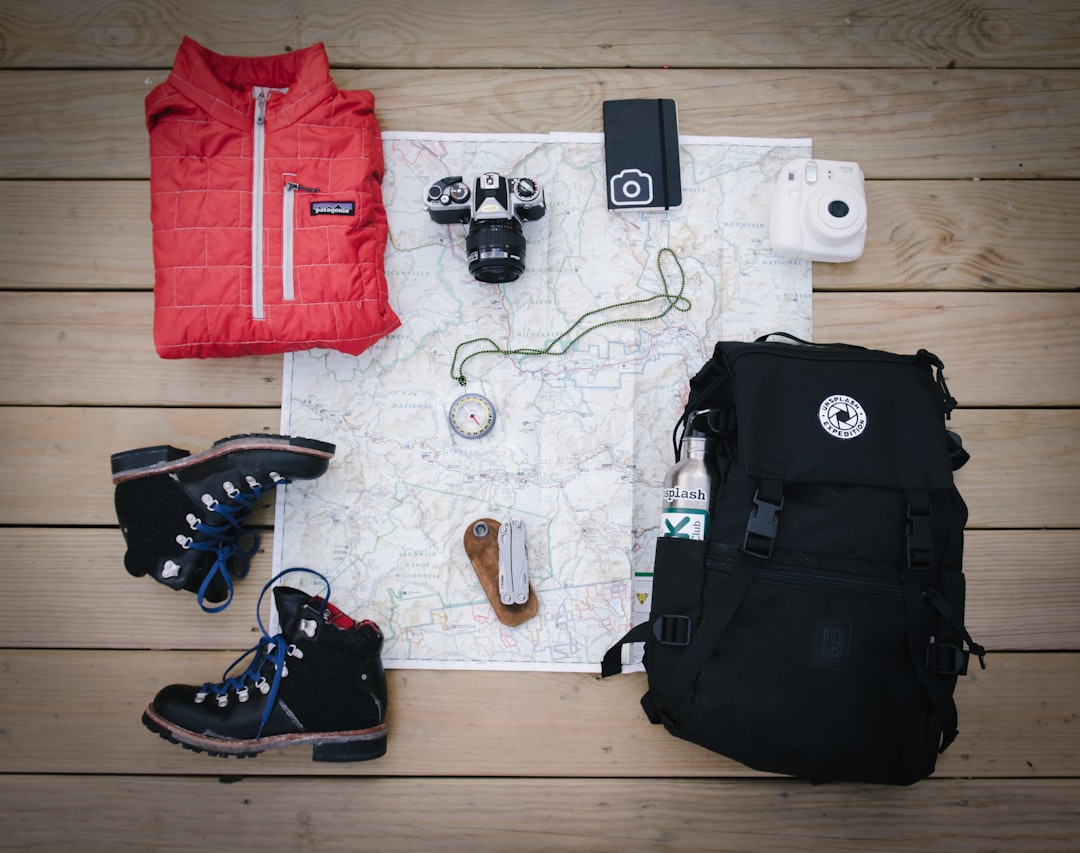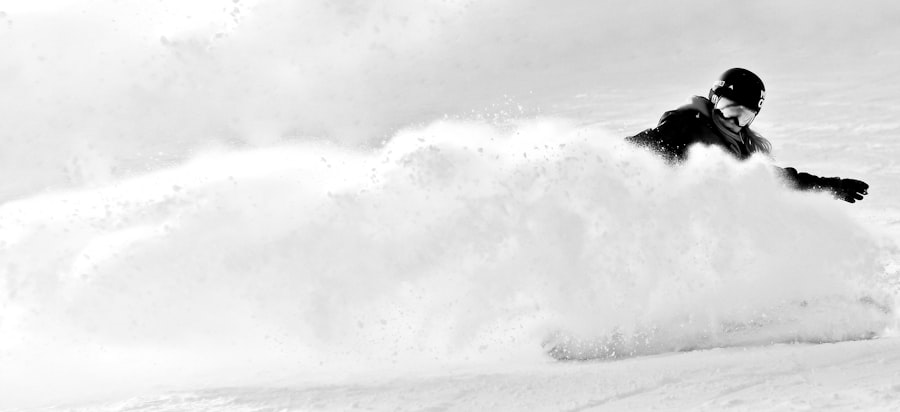Robot vacuums have revolutionized the way we clean our homes. These small, autonomous devices are…

Top 10 Must-Have Backcountry Snowboarding Gear for 2024: Upgrade Your Ride with These Essentials
Backcountry snowboarding has seen a significant rise in popularity in recent years. As more and more snowboarders seek out untouched powder and the thrill of exploring remote mountainous terrain, the importance of having the right gear cannot be overstated. Backcountry snowboarding presents unique challenges and risks that require specialized equipment for both safety and performance. In this article, we will explore the evolution of backcountry snowboarding gear and discuss the various factors to consider when choosing the right gear for your backcountry adventures.
Key Takeaways
- Backcountry snowboarding gear is crucial for a safe and enjoyable experience in 2024.
- Snowboard bindings are the foundation of your ride and should be chosen carefully.
- Avalanche safety gear is essential for backcountry exploration and should always be carried.
- Snowboard boots should provide both comfort and performance in the backcountry.
- Splitboards are the ultimate tool for backcountry snowboarding and allow for easier uphill travel.
Snowboard Bindings: The Foundation of Your Ride
Snowboard bindings play a crucial role in connecting you to your board and transferring your movements to the snow. They provide stability, control, and responsiveness, making them an essential component of your backcountry snowboarding gear. There are different types of bindings available, including traditional strap bindings, rear-entry bindings, and step-on bindings.
Traditional strap bindings are the most common type and offer a secure fit and customizable adjustments. Rear-entry bindings provide convenience and ease of use, allowing you to quickly get in and out of your bindings. Step-on bindings, on the other hand, offer a quick and seamless entry system that eliminates the need for straps altogether.
When choosing bindings for backcountry snowboarding, it is important to consider factors such as your riding style, terrain preferences, and personal preferences for comfort and convenience. It is also crucial to ensure that your bindings are compatible with your boots and board.
Avalanche Safety Gear: Essential for Backcountry Exploration
One of the most significant risks associated with backcountry snowboarding is the potential for avalanches. The backcountry is inherently unpredictable, and being prepared with the right avalanche safety gear can mean the difference between life and death.
The essential avalanche safety gear every backcountry snowboarder should have includes an avalanche transceiver (also known as a beacon), a shovel, and a probe. An avalanche transceiver is a device that emits and receives signals, allowing rescuers to locate buried individuals in the event of an avalanche. A shovel is used to dig out victims, while a probe is used to pinpoint their location under the snow.
It is crucial to familiarize yourself with how to properly use avalanche safety gear and practice using it before heading into the backcountry. Taking an avalanche safety course and regularly practicing with your gear can significantly increase your chances of survival in the event of an avalanche.
Snowboard Boots: Comfort and Performance in the Backcountry
| Brand | Model | Comfort Rating (out of 10) | Performance Rating (out of 10) | Price Range |
|---|---|---|---|---|
| Burton | Ion Boa | 9 | 9 | |
| K2 | Aspect | 8 | 9 | |
| Salomon | Malamute | 9 | 10 | |
| Ride | Lasso Pro | 8 | 8 | |
| ThirtyTwo | Jones MTB | 9 | 9 |
Comfortable and supportive boots are essential for backcountry snowboarding. They provide stability, control, and protection for your feet and ankles, allowing you to ride with confidence in challenging terrain. There are different types of boots available, including soft boots, hard boots, and hybrid boots.
Soft boots are the most common type of snowboard boots and offer flexibility and comfort. They are suitable for all-mountain riding and provide a good balance between performance and comfort. Hard boots, on the other hand, are stiffer and offer more precise control, making them ideal for aggressive riders who prioritize performance over comfort. Hybrid boots combine the best of both worlds, offering a balance between flexibility and responsiveness.
When choosing boots for backcountry snowboarding, it is important to consider factors such as your riding style, foot shape, and personal preferences for comfort and performance. It is also crucial to ensure that your boots are compatible with your bindings.
Splitboards: The Ultimate Backcountry Snowboarding Tool
A splitboard is a specialized snowboard that can be split into two separate skis for uphill travel in the backcountry. It allows snowboarders to access remote areas without the need for snowshoes or ski touring equipment. Splitboards have become increasingly popular among backcountry snowboarders due to their versatility and efficiency.
The benefits of using a splitboard for backcountry snowboarding are numerous. They allow for efficient uphill travel, as the splitboard skins provide traction on the ascent. Once at the top, the splitboard can be reassembled into a regular snowboard for the descent, allowing for a seamless transition between uphill and downhill riding. Splitboards also offer the advantage of being able to navigate through narrow and technical terrain that would be challenging or impossible on a regular snowboard.
When choosing a splitboard, it is important to consider factors such as your riding style, terrain preferences, and personal preferences for flex and shape. It is also crucial to ensure that your splitboard is compatible with your bindings and boots.
Goggles: Protect Your Eyes and Enhance Your Vision

Goggles are an essential piece of gear for backcountry snowboarding. They protect your eyes from wind, snow, and harmful UV rays, while also enhancing your vision in various light conditions. There are different types of goggles available, including cylindrical goggles and spherical goggles.
Cylindrical goggles have a flat lens and offer a wide field of view. They are generally more affordable but may have some distortion around the edges. Spherical goggles, on the other hand, have a curved lens that mimics the shape of the human eye. They provide better optical clarity and reduce distortion, but they may come at a higher price point.
When choosing goggles for backcountry snowboarding, it is important to consider factors such as lens type, lens tint, fit, and ventilation. It is also crucial to ensure that your goggles are compatible with your helmet.
Backpacks: Carry Your Gear and Stay Organized
A good backpack is essential for backcountry snowboarding as it allows you to carry all your gear and stay organized on the mountain. It should be comfortable, durable, and have enough storage space for your avalanche safety gear, extra layers, food, water, and other essentials. There are different types of backpacks available, including daypacks and multi-day packs.
Daypacks are smaller and more lightweight, designed for shorter backcountry trips. They typically have a capacity of around 20-30 liters and offer enough space for the essentials. Multi-day packs, on the other hand, are larger and more spacious, designed for longer backcountry trips. They typically have a capacity of 30 liters or more and offer additional features such as ski or snowboard carry systems and dedicated compartments for avalanche safety gear.
When choosing a backpack for backcountry snowboarding, it is important to consider factors such as capacity, fit, comfort, and organization features. It is also crucial to ensure that your backpack is compatible with your body size and shape.
Outerwear: Stay Warm, Dry, and Protected in the Backcountry
Proper outerwear is essential for backcountry snowboarding as it helps you stay warm, dry, and protected from the elements. It should be waterproof, breathable, and durable to withstand the harsh conditions of the backcountry. There are different types of outerwear available, including jackets and pants.
When choosing outerwear for backcountry snowboarding, it is important to consider factors such as waterproof rating, breathability rating, insulation type, fit, and ventilation. It is also crucial to ensure that your outerwear allows for freedom of movement and has enough pockets to store your essentials.
Helmets: Protect Your Head and Ride with Confidence
Wearing a helmet is crucial for backcountry snowboarding as it protects your head from impact injuries and reduces the risk of concussion. Helmets should be comfortable, lightweight, and have a secure fit to ensure maximum protection. There are different types of helmets available, including traditional helmets and MIPS helmets.
Traditional helmets provide basic protection by absorbing impact forces through their foam liner. MIPS helmets, on the other hand, have an additional layer that allows the helmet to rotate slightly upon impact, reducing the rotational forces that can cause brain injuries.
When choosing a helmet for backcountry snowboarding, it is important to consider factors such as fit, comfort, ventilation, and safety certifications. It is also crucial to ensure that your helmet is compatible with your goggles.
Accessories: Small but Essential Items for Backcountry Snowboarding Success
In addition to the major gear items mentioned above, there are several small accessories that are essential for backcountry snowboarding success. These include items such as gloves, socks, base layers, hand warmers, and a first aid kit. Gloves should be waterproof and insulated to keep your hands warm and dry. Socks should be moisture-wicking and provide cushioning and support. Base layers should be breathable and moisture-wicking to regulate your body temperature. Hand warmers can provide additional warmth on cold days. And a first aid kit should contain essential items such as bandages, antiseptic wipes, and pain relievers.
When choosing accessories for backcountry snowboarding, it is important to consider factors such as material quality, fit, and functionality. It is also crucial to ensure that your accessories are suitable for the specific conditions you will be riding in.
In conclusion, having the right gear is essential for a safe and successful backcountry snowboarding experience. By considering the factors outlined in this article, you can choose the gear that best suits your needs and preferences and enjoy the thrill of backcountry snowboarding with confidence. Remember to always prioritize safety and be prepared for the challenges that the backcountry may present. Happy shredding!
Looking for the best gear for backcountry snowboarding in 2024? Look no further! We’ve got you covered with our top recommendations. And while you’re at it, why not check out this related article on the best Santa Claus legs of 2016? It may seem unrelated, but trust us, it’s a fascinating read that will surely pique your interest. Just click here to dive into the world of Santa Claus legs and discover the latest bestsellers. Happy snowboarding!
FAQs
What is backcountry snowboarding?
Backcountry snowboarding refers to snowboarding in unmarked or unpatrolled areas outside of ski resorts. It involves hiking or using specialized equipment to access remote areas with fresh snow.
What gear is essential for backcountry snowboarding?
Essential gear for backcountry snowboarding includes a splitboard or snowshoes for hiking, avalanche safety equipment (beacon, shovel, and probe), a backpack, warm clothing, and a helmet.
What is a splitboard?
A splitboard is a snowboard that can be separated into two halves, allowing it to be used as skis for uphill travel. It is a popular choice for backcountry snowboarding as it eliminates the need for snowshoes or other hiking equipment.
What should I look for in a backpack for backcountry snowboarding?
A backpack for backcountry snowboarding should be lightweight, durable, and have enough space to carry all necessary gear. Look for features such as hydration compatibility, ski/snowboard carry options, and easy access to your avalanche safety equipment.
What is avalanche safety equipment?
Avalanche safety equipment includes a beacon, shovel, and probe. These tools are used to locate and rescue someone who has been buried in an avalanche. It is essential to have this equipment and know how to use it when snowboarding in the backcountry.
What type of clothing should I wear for backcountry snowboarding?
Clothing for backcountry snowboarding should be warm, waterproof, and breathable. Layers are important as you will be exerting yourself while hiking and then sitting still while snowboarding. Look for clothing made from technical fabrics designed for outdoor activities.
What is the best type of helmet for backcountry snowboarding?
The best type of helmet for backcountry snowboarding is one that is specifically designed for snow sports and has a snug fit. Look for helmets with adjustable vents to regulate temperature and a goggle clip to keep your goggles in place.



This Post Has 0 Comments